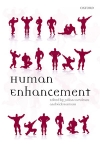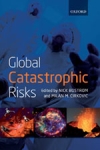| Kirjaston kirjojen kuvaukset |
Abrams: Worldchanging: A User's Guide for the 21st CenturyWorldchanging on 600-sivuinen kokoelma täynnä ideoita ja ratkaisuja kestävän, tehokkaan ja ympäristöystävällisen tulevaisuuden rakentamiseksi. Suurin osa kirjan sisältämästä materiaalista löytyy Worldchanging-sivustolta (http://www.worldchanging.com/) ja koska kirja keskittyy pääosin nykypäivän ja lähitulevaisuuden ratkaisuihin, monet osioista myös vanhenevat hyvin äkkiä. Hakuteosmaisen "jokaiselle jotain" -luonteensa vuoksi kirja ei ole kokonaisuutena mikään suuri lukukokemus ja useiden kirjoittajien johdosta myös sisällön laatu vaihtelee luvusta toiseen, mutta sitä voi silti suositella hyvin tyylikkääksi ja innostavaksi selailukirjaksi olohuoneen pöydälle. (Marko Naumanen) Airaksinen: Ihmiskoneen tulevaisuus"Ottavatko robotit, kyborgit ja tietoverkot ihmisen paikan maailmassa? Pohdiskeluja tekniikan etiikasta ja posthumanismin mahdollisuuksista." Katso pidempi esittely WSOY:n sivuilta (http://www.wsoy.fi/index.jsp?c=/product&isbn=951-0-31142-1) Buchanan: From Chance to Choice: Genetics and JusticeFrom Library Journal De Grey, Aubrey: Ending AgingAmazon.com MUST WE AGE? A long life in a healthy, vigorous, youthful body has always been one of humanity’s greatest dreams. Recent progress in genetic manipulations and calorie-restricted diets in laboratory animals hold forth the promise that someday science will enable us to exert total control over our own biological aging. Nearly all scientists who study the biology of aging agree that we will someday be able to substantially slow down the aging process, extending our productive, youthful lives. Dr. Aubrey de Grey is perhaps the most bullish of all such researchers. As has been reported in media outlets ranging from 60 Minutes to The New York Times, Dr. de Grey believes that the key biomedical technology required to eliminate aging-derived debilitation and death entirely—technology that would not only slow but periodically reverse age-related physiological decay, leaving us biologically young into an indefinite future—is now within reach. In Ending Aging, Dr. de Grey and his research assistant Michael Rae describe the details of this biotechnology. They explain that the aging of the human body, just like the aging of man-made machines, results from an accumulation of various types of damage. As with man-made machines, this damage can periodically be repaired, leading to indefinite extension of the machine’s fully functional lifetime, just as is routinely done with classic cars. We already know what types of damage accumulate in the human body, and we are moving rapidly toward the comprehensive development of technologies to remove that damage. By demystifying aging and its postponement for the nonspecialist reader, de Grey and Rae systematically dismantle the fatalist presumption that aging will forever defeat the efforts of medical science. From the Back Cover People alive today could live to be a thousand years old “His clarion call to action is the message neither of a madman nor a bad man, but of a brilliant, beneficent man of goodwill, who wants only for civilization to fulfill the highest hopes he has for its future.” —Dr. Sherwin Nuland, clinical professor of surgery at Yale University School of Medicine and author of How We Die and The Art of Aging “Seems to me this man could be put in jail with reasonable cause.” —Dr. Martin Raff, emeritus professor of biology at University College London and coauthor of Molecular Biology of the Cell A leading researcher sketches the real “fountain of youth” - The most realistic way to combat aging is to rejuvenate the body at the molecular and cellular level, removing accumulated damage and restoring us to a biologically younger state. - Comprehensive rejuvenation therapies can feasibly postpone age-related frailty and disease indefinitely, greatly extending our lives while eliminating, rather than lengthening, the period of late-life frailty and debilitation. - A comprehensive panel of rejuvenation therapies could probably be validated in laboratory mice within a decade. We would then have a good chance of developing it for human use only a decade or two thereafter. - Removing the causes of aging-related deaths will also eliminate all the suffering that aging inflicts on most people in the last years of their lives. - Aging kills 100,000 people a day: old people, yes, but old people are people too. Social concerns about the effects of defeating aging are legitimate but don’t outweigh the merits of saving so many lives and alleviating so much suffering. Garreau, Joel: Radical EvolutionRadical Evolution koostuu lehtiartikkelimaisista luvuista haastatteluineen, anekdootteineen ja henkilökuvauksineen. Teos on jaettu karkeasti kolmeen osaan: Heaven, Hell ja Prevail. Alkuosa kirjasta omistetaan DARPA:n projekteille, kehityksen nopeutumiselle ja Kurzweilin optimistisille visioille. Hell-skenaariossa puheenvuoron saavat pessimistisemmät ajattelijat kuten Bill Joy, ja kultaista keskitietä tarpovan Prevail-skenaarion päähenkilönä on Jaron Lanier. Kokonaisuutena teos jää pintapuoliseksi katsaukseksi aiheisiin, vaikka sisältääkin muutamia mielenkiintoisia spekulaatioita ja näkökulmia. (Marko Naumanen) Hofstadter, Douglas: Gödel, Escher, BachAmazon.com Twenty years after it topped the bestseller charts, Douglas R. Hofstadter's Gödel, Escher, Bach: An Eternal Golden Braid is still something of a marvel. Besides being a profound and entertaining meditation on human thought and creativity, this book looks at the surprising points of contact between the music of Bach, the artwork of Escher, and the mathematics of Gödel. It also looks at the prospects for computers and artificial intelligence (AI) for mimicking human thought. For the general reader and the computer techie alike, this book still sets a standard for thinking about the future of computers and their relation to the way we think. Hofstadter's great achievement in Gödel, Escher, Bach was making abstruse mathematical topics (like undecidability, recursion, and 'strange loops') accessible and remarkably entertaining. Borrowing a page from Lewis Carroll (who might well have been a fan of this book), each chapter presents dialogue between the Tortoise and Achilles, as well as other characters who dramatize concepts discussed later in more detail. Allusions to Bach's music (centering on his Musical Offering) and Escher's continually paradoxical artwork are plentiful here. This more approachable material lets the author delve into serious number theory (concentrating on the ramifications of Gödel's Theorem of Incompleteness) while stopping along the way to ponder the work of a host of other mathematicians, artists, and thinkers. The world has moved on since 1979, of course. The book predicted that computers probably won't ever beat humans in chess, though Deep Blue beat Garry Kasparov in 1997. And the vinyl record, which serves for some of Hofstadter's best analogies, is now left to collectors. Sections on recursion and the graphs of certain functions from physics look tantalizing, like the fractals of recent chaos theory. And AI has moved on, of course, with mixed results. Yet Gödel, Escher, Bach remains a remarkable achievement. Its intellectual range and ability to let us visualize difficult mathematical concepts help make it one of this century's best for anyone who's interested in computers and their potential for real intelligence. --Richard Dragan Topics Covered: J.S. Bach, M.C. Escher, Kurt Gödel: biographical information and work, artificial intelligence (AI) history and theories, strange loops and tangled hierarchies, formal and informal systems, number theory, form in mathematics, figure and ground, consistency, completeness, Euclidean and non-Euclidean geometry, recursive structures, theories of meaning, propositional calculus, typographical number theory, Zen and mathematics, levels of description and computers; theory of mind: neurons, minds and thoughts; undecidability; self-reference and self-representation; Turing test for machine intelligence.Book Description Winner of the Pulitzer Prize, this book applies Godel's seminal contribution to modern mathematics to the study of the human mind and the development of artificial intelligence. --This text refers to an out of print or unavailable edition of this title. Hughes, James: Citizen CyborgCitizen Cyborg on kompakti paketti transhumanistisen ja bioluddiittisen ajattelun ristiriidoista sekä mahdollisista ratkaisuista niihin demokraattisen transhumanismin kautta. Hughesin yksityiskohtaiset näkemykset lähitulevaisuuden kolmiulotteisesta biopoliittisesta kentästä ja "alustariippumattomista" kansalaisoikeuksista tarjoavat luontevan lähtökohdan transhumanistiseen liikkeeseen vasta tutustuville tai kätevän yhteenvedon aiheita jo syvemmin tunteville. Selkeä, jämpti teos. (Marko Naumanen) Kaku, Michio: Visions: How Science Will Revolutionize the 21st CenturyAmazon.com Kahneman: Judgment under uncertainty: Heuristics and biasesReview Kurzweil, Ray: Singularity Is NearFrom Publishers Weekly Leroi, Armand Marie: MutantsArmand Marie Leroin Mutants on kiehtova kokoelma historiallisia (Marko Naumanen) Naam, Ramez: More Than Human
More Than Human on erityisesti lääkkeisiin, implantteihin ja muihin lyhyellä tähtäimellä ihmisen paranteluun soveltuviin biologispohjaisiin tekniikoihin keskittyvä kirja. Alkupuolen esimerkkirikkaat kappaleet laboratorioissa käytännössä tapahtuvista tutkimuksista ovat kirjan parasta antia, kun taas loppupuolen vähemmän yksityiskohtaiset yhteiskunnalliset spekulaatiot bioteknologioiden mukanaan tuomista muutoksista ja vaikutuksista jäävät puolitiehen. Kokonaisuudessaan kirjasta jää hyvin samanlainen "ihan ok" -vaikutelma kuin Joel Garreaun kirjasta Radical Evolution. (Marko Naumanen)
Regis, Ed: Great Mambo ChickenGreat Mambo Chicken on humoristinen kuvaus transhumanistisen liikkeen lähihistoriasta ennen Internet-aikaa, jolloin kryoniikkaan, nanoteknologiaan ja avaruusmatkailuun ym. tärkeisiin asioihin keskittyneet tahot olivat erillään, mutta silti yhteydessä toisiinsa hyvin yllättävilläkin tavoilla. Kirjan päähenkilöinä vilahtavat Robert Truax, Eric Drexler, Hans Moravec, Keith Henson ja monet muut tutut nimet, edustaen kukin vuorollaan tietynlaista kaikki rajoitukset rikkovan tiedemiehen arkkityyppiä. Kevytlukuinen kirja täynnä mielenkiintoista triviatietoa, mielikuvituksellisia ideoita ja optimistista can-do asennetta. (Marko Naumanen) Stock, Gregory: Redesigning HumansAmazon.com Will the genetic research that gave us the Flavr Savr tomato also give us the power to customize our children? Medical thinker Gregory Stock believes that this is precisely what's happening and that we'd better get used to it fast. Redesigning Humans: Our Inevitable Genetic Future explores gender selection, gene therapy, germinal choice, and many more options available now or in the near future, but lays aside the hysteria common to such discussions. Stock sees the cloning controversy as a distraction from issues of real importance, such as balancing offspring trait selection against eugenics. Writing with the clarity and precision of a philosopher, Stock engages his readers with thought exercises and real-life examples. While not a brainless cheerleader for big science, he believes that we can, and certainly will, use any means necessary to give our children an edge, even if it means profound changes for our species. Redesigning Humans offers the hope that these changes need not be catastrophic if we pay attention now. --Rob Lightner --This text refers to the Hardcover edition. Wilson, Daniel H.: How to Survive a Robot UprisingNimensä, visuaalisen ilmeensä, ja takakannesta löytyvän kategorisointinsa ("humor") puolesta "How to survive a robot revolution" antaa ymmärtää, että se on puhtaasti hassutteluksi tarkoitettu läpyskä robottivallankumouksen huvittavuudesta epärealistisuudessaan. Kirjan teksti on kuitenkin kirjoitettu pääasiallisesti vakavalla naamalla, ja toimii hyvänä esittelynä robotiikan tutkimuksen nykytilaan. Nykyrobotit käydään läpi ominaisuus ominaisuudelta (liikkuminen, aistit jne.) ja myös tulevaisuuden mahdollisuuksia kartoitetaan. Oletettavasti alaa paremmin tunteville kirjassa on tuskin mitään uutta, mutta maallikolle kirja toimii hyvänä johdantona robotiikan maailmaan, vaikka (tai ehkä koska) lähestymistapa aiheeseen onkin vähän erikoinen. Todettakoon vielä, että kirjan liimaus on sen verran ala-arvoinen, että sivuja alkoi irtoamaan jo varovaisellakin kertalukemisella. Kohdeltava silkkihansikkain. (Jani Moliis) Wright, John C.: The Golden Age (Golden Age Trilogy part 1)Se, mikä tästä kirjasta jää vahvimpana mieleen on, kuinka sujuvasti John C. Wright kuvaa maailmaa 10,000 vuoden päästä. Kuvailua ei väännetä rautalangasta, vaan Wright kirjoittaa kuin olettaen, että aistifiltterit, siirtymiset reaali- ja virtuaalimaailman välillä tai mielieditoinnit olisivat lukijallekin aivan normaalia arkipäivää. Ensimmäiset sata sivua menevätkin lähinnä ihmetellessä tätä Wrightin kuvausta eräänlaisesta utopiasta. Juonikin kehittyy mukavasti, ja on ehdottomasti parhaimmillaan tässä trilogian ensimmäisessä osassa, joka on todella suositeltavaa sci-fi luettavaa. (Jani Moliis) Wright, John C.: The Phoenix Exultant (Golden Age Trilogy part 2)Trilogian toisessa osassa päähenkilö Phaethon joutuu elämään karkotettuna ja vaeltamaan muiden karkoitettujen joukossa ilman tulevaisuuden yhteiskunnan suomia mukavuuksia. Kirja keskittyy voimakkaammin juonen kehittämiseen kuin tulevaisuuden teknologioiden kuvaamiseen (paitsi Phaethonin nanopanssari, joka on merkittävässä osassa). (Jani Moliis) Wright, John C.: The Golden Transcendence (Golden Age Trilogy part 3)"Avaruus-scifimäisin" kolmesta kirjasta avaruussiirtokuntineen ja -aluksineen. Trilogian juonen loppuhuipennus jää vähän laimeaksi, mutta loppujen lopuksi trilogia nivoutuu hyväksi ja luettavaksi kokonaisuudeksi. Jos koko trilogia (1100 sivua) tuntuu liialta, parhaat palat saa nautittua pelkän ensimmäisen osan lukemalla. (Jani Moliis)
|


